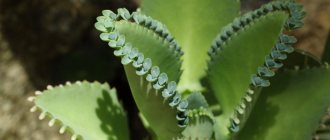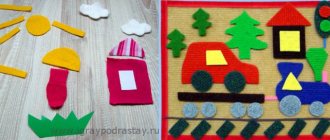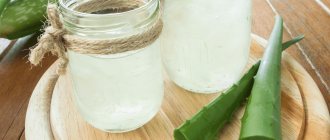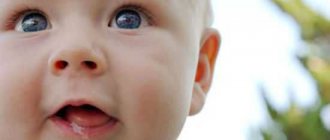How and with what means can you treat a runny nose in a baby?
consults a pediatric ENT doctor.
How and how to treat a runny nose in a child is perhaps the most common question that worries young mothers. Nasal congestion during a runny nose occurs for two reasons: excess production of mucus (snot) and swelling of the soft tissues of the nasal cavity. This can make it difficult for your child to sleep and lead to a sinus infection (sinusitis). Another unpleasant consequence of a runny nose and nasal congestion is disruption of breastfeeding. Babies breathe through their nose when they nurse. If the nose is stuffy, the baby will simply be forced to stop breastfeeding to breathe. If the baby eats little, the mother produces less milk in response, which can lead to insufficient weight gain in the child, dehydration, and immunodeficiency. If a child lives with chronic nasal congestion for more than a year, this leads to a gradual deformation of the facial skull: the face becomes elongated, the upper jaw narrows relative to the lower jaw, the formation of the bite is disrupted, and the height of the vault of the hard palate increases. This is the so-called “adenoid habitus”. At the same time, a child with a chronically stuffy nose almost always has his mouth slightly open, and “jams” appear in the corners of the mouth - areas of inflammation due to flowing saliva. It is necessary to treat colds and runny nose in a timely manner, without bringing the problem to a chronic form.
Let's figure out what types of runny nose occur in newborns, and how best to treat them at home.
How to restore nasal breathing in a baby?
If a newborn has a stuffy nose, you need to contact a pediatrician who will conduct an examination and explain what to do to eliminate the obstruction of the nasal passages.
Cleansing the nasal cavity
In the case of physiological rhinitis, medications are not used. It is necessary to ensure evacuation of exudate using an aspirator. Before using the device, you should carefully study the instructions so as not to damage the baby’s delicate mucous membranes. A few minutes before the procedure, it is recommended to instill 2-3 drops of an isotonic solution such as Aqualor Baby. The drug will thin the mucus and soften the crusts, which will increase the effect of aspiration.
Another way to make nasal breathing easier is to rinse with cotton wool. Flagella are rolled out of cotton wool, soaked in clean water or 0.9% NaCl solution and placed in the nasal passages, after which they are removed with rotational movements along with clots of mucus.
Drug therapy
In case of respiratory diseases, the doctor prescribes gentle antibacterial, antifungal or antiviral drugs, immunostimulating agents of general and local action.
For allergic rhinitis, antihistamines are used. Vasoconstrictors will help overcome severe swelling of the mucous membrane. Application period: no more than 5-7 days.
Medicines for the treatment of nasal congestion in infants should be in the form of suspensions, rectal suppositories and nasal drops. You cannot independently choose a drug for a baby, much less use pharmacological agents for adults.
Application of Aqualor solutions
The Aqualor Baby series is intended for newborns in the form of drops and a spray with a “soft shower” spray. Children's preparations are sea water of isotonic concentration, which are used both for daily hygiene and as part of complex therapy for inflammatory diseases of the nasopharynx of any etiology.
Aqualor ensures softening of crusts and dissolution of mucous clots in the baby’s nasal cavity. Additional microelement composition helps stimulate local immune mechanisms, increases the resistance of the nasal mucosa to viruses, bacteria and allergens.
After 6 months, you can use other isotonic solutions of Aqualor. All brand products are created by processing natural sea water and do not include artificial additives, so they can be used to relieve nasal congestion during pregnancy, nursing mothers and those suffering from allergies.
Runny nose in newborns: common causes
When a child is under 3 months of age, nasal congestion may occur or worsen due to a still weak immune system. At this age, a runny nose is critical for a child, since due to the small volume of the nasal passages, the child’s nasal breathing is almost always impaired.
Over the age of three months, nasal congestion and runny nose, although unpleasant, are no longer so critical for maintaining nasal breathing, since the internal space of the baby’s nasal passages becomes somewhat larger by this age. However, even at this age, a runny nose can significantly complicate nasal breathing and breastfeeding. The most common cause is a viral infection. In total, there are about two hundred viruses that can cause a cold, in which the main symptom is a runny nose. A child may often catch colds until his immune system “gets acquainted” with all types of viruses. If an adult normally suffers from colds 3-4 times a year, then a baby can get sick 8-10 times a year.
However, a runny nose in a child does not always mean a cold. During winter or cold weather, a baby's nose tries to protect itself from the effects of the cold by producing more mucus to clean itself. Another common cause of a runny nose may be an allergic reaction or teething (in this case, excessive drooling is also observed). Remember that nasal breathing problems can be caused by a foreign body (such as a piece of food) entering the nasal passages.
Method 2. To start using hormonal medications, it is important to know the causes of a runny nose!
The next group of drugs that we will consider are hormonal drugs for the treatment of runny nose in children.
They are used when an allergy is diagnosed or drug-induced rhinitis (dependence on vasoconstrictors) has developed. In addition, these drugs are indicated for chronic runny nose, treatment of severe rhinitis with complications in the form of sinusitis (inflammation of the paranasal sinuses). A doctor may recommend hormonal drops for a runny nose; sprays or ointments are also suitable for children. The effect occurs gradually, lasting relief is usually achieved after 2-3 weeks of use. Treatment of allergic rhinitis in a child with the help of hormonal drugs is indicated only for severe, pronounced forms.
These drugs do not damage the mucous membrane and are not addictive, but they have a fairly extensive list of contraindications and side effects. Therefore, they are used only as prescribed by a doctor.
What can colored snot tell about a child?
Clear baby snot is the most common type of snot and should not be particularly alarming. This color of snot may simply indicate the activation of the nose's natural way of clearing in cold air or in a dusty (polluted) atmosphere. But clear snot can also be a sign of an allergic reaction, or serve as the first signs of an incipient cold.
White snot is more common in children over one year of age. The white color is usually caused by consuming milk, which thickens the mucus and gives it a whitish color. As babies get older and stop nursing, the presence of white mucus can be a sign of dehydration.
Light yellow snot. The mucus may turn yellow if it lingers in your baby's nose or sinuses for a while. Although the yellow color of snot is caused by the color of partially degraded immune cells in the blood - white blood cells and monocytes, the presence of light yellow discharge does not always mean that the child currently has a sinus infection. The snot may also turn yellow as the common cold progresses. But if a child’s yellow snot persists for more than two weeks, it is necessary to seek advice from a pediatric otolaryngologist to prevent the development of sinusitis.
Yellow snot. If your baby's light yellow snot turns opalescent yellow or bright yellow, it may be a sign that your baby has already developed a sinus infection. In this case, it is necessary to undergo an examination by a pediatrician or pediatric ENT doctor.
Green snot. Your baby's snot may turn green as the cold gets worse. Green snot can also occur with an already developed infection of the paranasal sinuses. If green mucus is observed only in the morning when the child wakes up, this is not a sign of a sinus infection. When a baby sleeps, bacteria accumulate in the mucus and turn the snot green. However, if your child produces green mucus all day long for several days, you should take your child to the doctor to check for possible sinusitis or other infection.
Orange, red or brown snot. Colors ranging from bright red to orange and brown are all signs that nasal mucus contains blood. Brown colors mean old dried blood is coming out of your baby's nose. Bright red colors are signs of fresh bleeding. Anyone, including babies, can have their nose bleed for no apparent reason. This is due to the accumulation of capillaries in the nose. In winter or dry weather, the nasal mucosa very easily cracks and bleeds. Also, streaks of blood may appear if the child blows his nose and does it too actively. There is no need to worry if your child has bloody snot once or twice. If blood appears in the snot regularly, the child should be urgently shown to a doctor.
Black or gray snot. Snot that is black or gray in color is a sign that the child has been breathing polluted air. Smoke (stove, cigarette), dust, dirt and other particles can get into the child’s nasal mucosa, causing it to stain. Mucus traps particles, preventing them from entering the lungs, and removes them from the body.
Symptoms
A runny nose in a newborn baby very often develops immediately after he is born. In the process of adapting to the outside world, the microflora of the nasal mucosa also adapts and therefore secretes a lot of mucus. There are three stages of runny nose in children.
- The first stage is dry. During this period, the child’s breathing is difficult, but mucus does not separate from the nose.
- The second stage is catarrhal. At this time, the nose is stuffy, and copious clear discharge constantly appears from it.
- The third stage is inflammatory. During this period, bacterial inflammation of the mucous membrane begins, the discharge becomes thick and has a greenish-yellow color.
As a rule, runny nose in young children is more severe than in adults. In addition, it develops very rapidly, since the nasal passages in infants are very short, and the mucous membranes are vulnerable. It is also important that an infant cannot blow his nose, so his nose is constantly stuffy and there is severe discomfort when breathing. As a result, a small child experiences unpleasant symptoms: headache, insomnia , loss of appetite. When a baby has a runny nose, the act of sucking is disrupted, and this leads to the baby losing weight, sleeping poorly, and being capricious.
Nasal congestion is often noted in the morning and evening. This condition may indicate that the indoor air is too dry. Sometimes, after sufficient air humidification, the baby's condition improves.
In infants with acute rhinitis, the pathological process often spreads to the mucous membrane of the pharynx, middle ear, nasopharynx, larynx, trachea, bronchi, and lungs. Rhinitis is very severe in premature babies with weakened immune systems .
It is important for parents to know what the symptoms of a physiological runny nose in an infant in order to distinguish it from a developing disease. With the development of physiological rhinitis, clear and liquid mucus is released from the nose, and there is relatively little of it in the nose. There is no swelling in the nose or redness of the conjunctiva. Also, with a natural runny nose, there are no signs of intoxication .
Sometimes the baby is capricious, but signs of severe lethargy and anxiety do not appear. Another sign of physiological rhinitis is a kind of “grunting”. These are the sounds the baby periodically makes when trying to clear his nose. The child can sleep with his mouth slightly open, but does not snore. Despite the fact that this condition is physiological, the baby may periodically have problems with eating or sleeping. If mucus is released from the nasal passages for more than a week, parents should definitely consult a doctor.
It is important to understand that the following symptoms in a baby are alarming symptoms:
- temperature increase;
- swelling and hyperemia of the nasopharynx;
- conjunctivitis;
- strong and cloudy nasal discharge.
If these signs occur, it is better to immediately consult a pediatrician.
How can a mother clean her baby's nose herself?
Do not use cotton swabs without a “limiter” or any other swabs with cotton wool wound on them to clean the nasal passages. Firstly, a piece of cotton wool can easily get stuck in the child’s nasal passage, and when you try to pull it out, only the stick is pulled out, and the cotton wool remains in the nasal passage. It is precisely this “foreign body” in the nose that parents most often turn to an ENT doctor. Also, the stick itself can easily damage the nasal mucosa, which can become infected.
One of the safest and most effective ways to help relieve congestion in a child is to rinse with saline or salt water spray, which are available over the counter in pharmacies. The spray is sprayed into each nostril, causing the mucus to liquefy, after which the mucus is blown out. If your child does not yet know how to blow his nose, you can use a nozzle ejector.
Sometimes a child's nose is so clogged that it needs to be cleared regularly to restore nasal breathing. It is important to ensure that the newborn has a clean nose and good nasal breathing before breastfeeding, so that the baby can feed comfortably without abandoning the breast. To do this, you can use a baby nasal aspirator, which looks like a rubber bulb with a clear plastic tip or tube with a rounded end. Using an aspirator helps remove all the excess snot from your baby's nose in a natural way at home.
Still have questions?
Get an online consultation from leading pediatricians in St. Petersburg!
A professional and experienced pediatrician will answer your questions.
Medical care for a child without leaving home at a convenient time.
sign up for a consultation
A Skype consultation lasts 45 minutes.
Method 4. Rinsing the nose with sea water: we treat congestion and runny nose comprehensively
One of the most harmless ways to combat a runny nose is to rinse your nose.
When a child has a runny nose, sea water or saline solution is injected into the nasal sinuses. They thin out thick mucus and remove it, wash away viruses and germs from the surface of the mucous membranes, and gradually reduce swelling and inflammation. Both using sea water and rinsing the nose with saline solution for a runny nose helps children breathe easier, but the effect of the procedure is unstable and does not last long. In addition, washing will be truly safe only if carried out according to all the rules. Otherwise, the solution from the nasopharynx may enter the mouth of the auditory tube, which connects the nose to the middle ear, and there is a risk of developing otitis media. The procedure also has practical disadvantages - children do not really like it, and it is simply impossible to carry out rinsing in a kindergarten or school.
Rinsing with saline solutions or sea water should not be used as a separate means of treating a runny nose, but as part of a set of measures that should help the child breathe freely.
How to use a baby aspirator?
- Take the aspirator in your right hand and squeeze the aspirator bulb with your hand to squeeze the air out of it.
- Place the tip of the aspirator against your child's nostril. If the child is older than one year and the diameter of the nasal passage allows, then the tip of the aspirator can be inserted into the nostril to a depth of up to 5 mm.
- Slowly release the squeezed bulb. Thanks to the vacuum, the snot will be removed from the baby's nose into the aspirator.
- Be sure to change the aspirator tip before cleaning the other nostril.
- After use, the aspirator must be washed, dried and treated with an antiseptic solution.
This procedure should be done approximately 15 minutes before feeding the baby and before bedtime. This will help your baby breathe easier when breastfeeding, taking a bottle, or going to bed. For some children, removing snot from the nose causes discomfort; the child may cry and “not give in.” This is a normal reaction, aspiration of snot from the nose is absolutely painless, the child is simply afraid of “new things.”
In what cases should you immediately consult a doctor?
- If a child between birth and one year of age has a stuffy nose and your efforts to rinse or suction are unsuccessful
- An infant cannot eat normally due to nasal congestion
- You notice that your baby is not eating or peeing much (a sign of dehydration)
- The child has a temperature above 37.8 C for more than three days
- Do you suspect that your child has ear pain?
- In addition to a runny nose, there is a cough
- Green or yellow snot lasts more than two weeks
- An unpleasant odor appears from the nose (which may indicate a foreign body)
Causes
The reasons for the development of a runny nose in children may be associated with exposure to a wide variety of factors. Rhinitis develops due to the following reasons:
- viral and bacterial infections;
- influence of allergens;
- indoor air is too dry;
- exposure to toxins and other environmental factors;
- entry of a foreign body into the nasal cavity;
- the so-called “runny nose on teeth” - can begin when the baby is teething;
- hypothermia, overheating, sudden temperature fluctuations.










